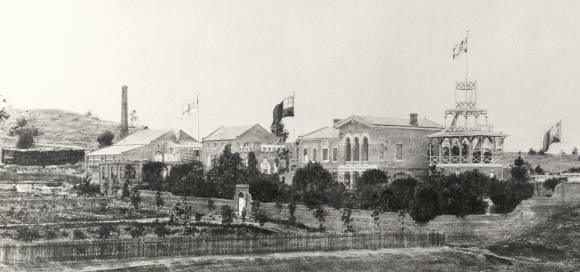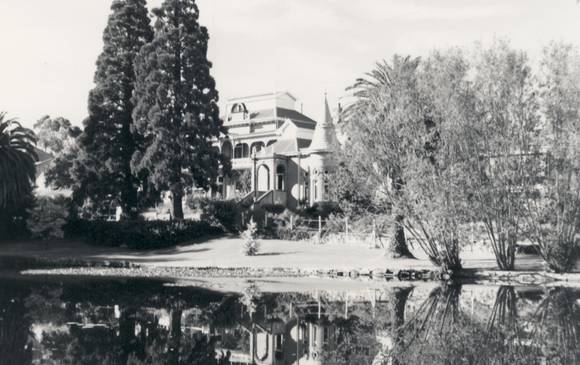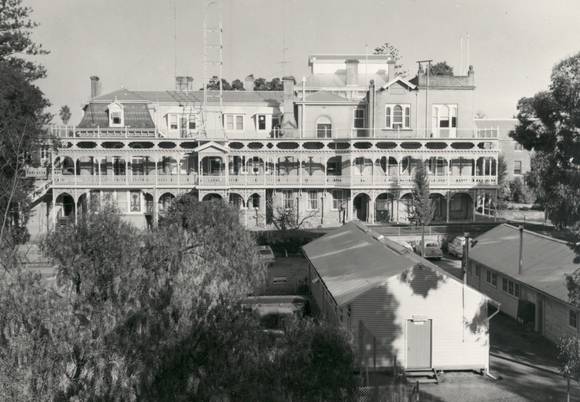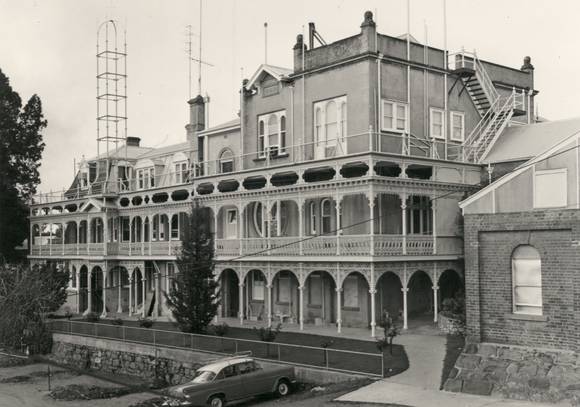| Back to search results » | Back to search page » |
|
Fortuna
Location22 - 48 Chum Street, GOLDEN SQUARE VIC 3555 - Property No B1177
File NumberB1177LevelState |
|
Statement of Significance
What is significant ? Fortuna Villa was initially commenced as a modest single storey home in 1861 next to the 180 Mine by Theodore Ballerstedt, who sold the mine and house to George Lansell in 1869. Lansell already owned the adjacent Fortuna Mine, and through deeper mining techniques greatly expanded the mine's operation, his personal wealth, and the house and grounds. Lansell was soon known as the 'Quartz King', Australia's first gold mining millionaire and credited as the driving force behind much of Bendigo's prosperity. He continuously added to and expanded the villa, decorating it extravagantly with the finest of artworks and materials, into a sprawling mansion with extensive landscaped grounds, to create a house and grounds of a size and grandeur with few rivals in Australia. After his death in 1907, his second wife Edith carried on with improvements, creating a house and grounds developed over 50 years. The attached mine also contributes to its significance, being one of the richest mines in Bendigo, and at one stage probably the deepest gold mine in the world at 3176 feet. The 1875 crushing works are attached directly to the mansion, and the mine's tailings and settling ponds (turned into ornamental lakes) represent a direct link between George Lansell's wealth and its source. Fortuna was compulsorily acquired by the Commonwealth in 1942 as the Cartographic Headquarters of the Australian Survey Corps during World War II, and many ancillary structures were added while preserving the main house and ornamental grounds. How is it significant ? Fortuna house and gardens are significant at the National level.
Why is it significant ? Fortuna contains several important features of individual rarity and significance. The Pompeii Fountain, constructed in 1879 is a scale replica of the Great Fountain in Pompeii, Italy. Comprising a number of water features, statues and a tall Roman column surmounted by a statue of a small boy, the fountain has outstanding aesthetic qualities and is believed to be unique in Australia. The conservatory features glass workmanship of the highest quality, regarded as among the most important examples of its type in Australia. It features panels of Ruby Flashed Seedless French Antique glass, as well as frosted acid-etched glass walls, containing a variety of artistic designs, including mining scenes, Australiana and heraldic symbols. The Roman bath, built by the Ballerstedts in the 1860s, was also an uncommon feature for large villas of the time.
Fortuna is regarded in Bendigo today as an outstanding symbol of the town's early growth on the wealth of gold, much of it attributed to Lansell's intuition for finding and exploiting reef deposits. Classification upgraded: 29/09/2008 EXTENT
The house known as Fortuna Villa and surviving interior decoration, original coach house, shade house, Pompeii fountain, site of former lake and remaining formal gardens, crushing works, main Chum Street gate and fence, site of adjacent mine workings , the two 1942 buildings in most intact condition (no. 10 - Raeme Store and no. 12 - Clothing Store), and whole of existing allotment.
Fortuna is historically significant as the former home and lifelong passion of George Lansell. As one of Australia's wealthiest men, and possibly its first gold mining millionaire, Lansell was a man of great repute, not just in Bendigo, but throughout Australia and Great Britain. His wealth and renown are demonstrated in the calibre of guests hosted by Lansell at Fortuna, including royalty, governors of Victoria and Dame Nellie Melba. Lansell's local popularity is demonstrated by a petition signed by over 2600 Bendigo men imploring him to return to Bendigo from Europe in 1887 to help restore the town's fortunes. Fortuna is also associated with Theodore and Christopher Ballerstedt, the property's original owners, who are believed by many to have been Australia's first mining magnates.
Fortuna is architecturally important as an impressive mansion, built over a considerable period, and incorporating a number of complementary styles, orchestrated by some of the Bendigo district's finest architects, including Vahland, Getzschmann and Beebe. It successfully combines Victorian Italianate with later Federation style additions to make a picturesque whole. This includes the late H shaped main Victorian sections of two storeys with extensive decorative cast-iron balconies front and rear. Steep hip roofs with lanterns and dormer window proliferate on these and later sections. The main entrance is a classical composition with grand stairs leading up, and a pair of cypresses in line in the garden beyond. Adjacent to this is a corner turreted room with a witch's hat roof, with an attached balconied section set back next, and further back is the ruby glass walled conservatory, elevated and cantilevered above a smaller ground floor area. This whole composition is the focus of the main diagonal views across the lake forming the most picturesque view. Edwardian era additions include the main stairs and corner turret, as well as various curved and bay windows added to the structure or within the balconies.
The juxtaposition of the crushing works and the domestic abode in the same complex is also highly unusual in Australian mining and industrial history. The interaction of the domestic and mining landscapes at Fortuna are recorded in the appropriation of redundant mining spaces such as settling ponds and tailings into the villa's grounds and gardens. The largest lake (a former settling pond) and its surrounds remain, providing a picturesque setting for the house (though the lakebed itself is now dry). The mining landscapes also affected the house through the construction of a walled barrier and the reversal of the house's front entrance.
Fortuna is also historically significant for its association with the Survey Corps, later the Survey Regiment, of the Australian Army. The site was acquired in 1942 as the Land Headquarters (LHQ) Cartographic Company, a base for the mapping activities of the Survey Corps during World War 2. Two corrugated iron buildings, known as buildings 10 (Reame Store) and 12 (Clothing Store) are the earliest remnants of the army's presence at Fortuna. In 2008, Fortuna was still operated of the Army Survey Regiment, with the mansion being used for accommodation and administration, and the former crushing works being used for the storage and printing of military maps.
Group
Residential buildings (private)
Category
House








